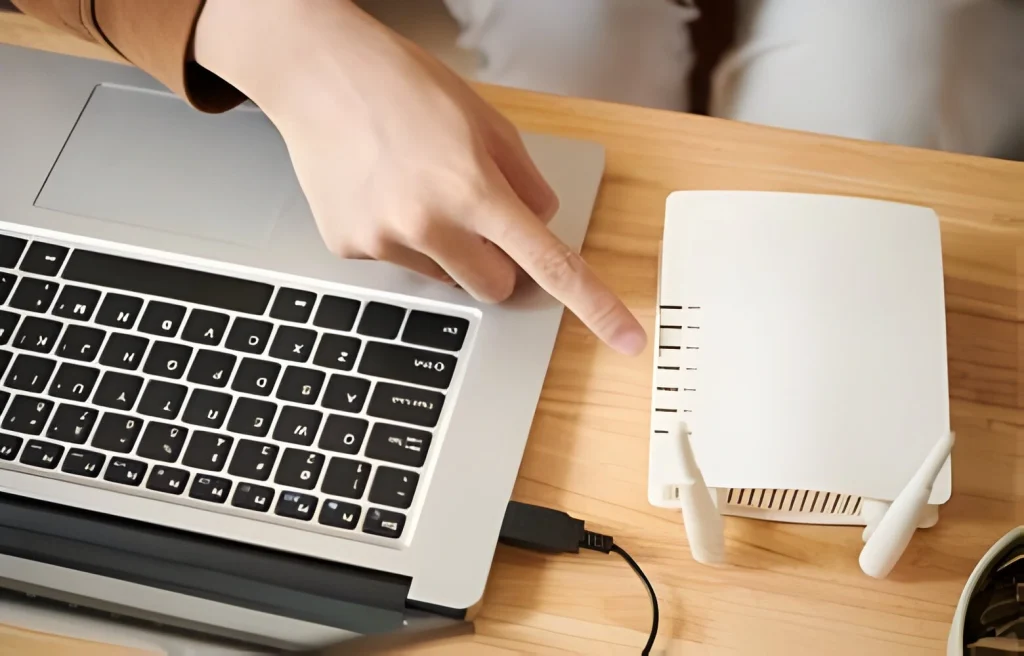NETGEAR Router Settings optimization allows you to unlock the full potential of your home network for maximum speed, range, security, and features. By accessing your router’s web interface and adjusting several key configurations, you can take control and customize things to your needs.
Accessing the Router Admin Interface
The first step is accessing your NETGEAR router’s admin interface, which allows changing settings. We’ve provided detailed steps on how to log in to Your NETGEAR Router.
In summary, open a web browser on a device connected to your NETGEAR WiFi network and visit routerlogin.net or the gateway IP address such as 192.168.1.1. When prompted, enter your admin username and password to access the dashboard.
At any point in time, if you feel confused about the settings, try to reset the router to its factory defaults then adjust the settings.
In this page
Optimizing WiFi Performance
Optimizing your WiFi settings is crucial for eliminating dead zones, reducing buffering, and allowing more simultaneous connections.

Understanding WiFi Channels
WiFi routers transmit data over specific channels or frequencies. If too many nearby networks use the same channel, interference occurs. Enable auto-channel selection so your router dynamically switches to the clearest channel.
Adjusting Transmission Power
Increase the transmission power if your network lacks the range to cover your entire home. Enabling beamforming also focuses the signal directly at client devices rather than blasting in all directions.
Enabling Quality of Service (QoS)
QoS lets you prioritize traffic for specific devices or applications. For example, you can ensure smooth video calls and streaming without lag by giving them top priority over other traffic.
Using Smart Connect
Smart Connect automatically steers each device to use either the 2.4GHz or 5GHz band for optimal performance based on conditions. This reduces congestion and interference.
Reducing Interference
Consider disabling WiFi on satellite boxes, cameras, and other stationary devices in favor of wired Ethernet connections to reduce crosstalk and interference. Place your router centrally in open spaces for the best reception throughout your home.
Managing Internet Access
Open specific ports used by games and applications for smooth online gameplay, set port forwarding rules for services running on your network, and configure VPN pass-through for secure remote access back to your home network.
Advanced Router Settings
Under “Advanced Settings”, you can enable helpful extra features:
- Dynamic DNS allows remote access to devices on your home network with domain name even if you have a dynamic ISP-assigned IP address at home.
- NETGEAR Armor provides an extra layer of cybersecurity beyond your firewall to protect all devices connected to your network from malware and hacking attempts.
- ReadySHARE lets you plug in a USB drive for network-based storage and backup accessible to all devices.
Monitoring and Controlling Usage
Under monitoring settings:
- View real-time and historical traffic meters showing internet usage and bandwidth consumption.
- Set internet access schedules and site-blocking rules for kids’ devices.
- Get email notifications whenever new devices join your network or inappropriate content is accessed.
Using NETGEAR Router Features
- Set up a separate guest network with a unique SSID and password for friends/visitors to simply provide temporary access without seeing your main home network and devices.
- Enable WiFi repeater mode to boost the range of your existing WiFi with NETGEAR’s advanced antenna technology.
- Connect IoT devices like smart lights and thermostats seamlessly as your router can serve as a central smart home hub.
- Use the Nighthawk app on your mobile to manage your home network from anywhere.
Networking Concepts Explained
Navigating advanced router settings often requires some networking knowledge. We’ll define some common terms and concepts to provide the right context:
Network Address Translation (NAT) – This allows multiple devices on your home network to access the public internet through the same public IP address assigned by your internet service provider. The router keeps track of internal IPs and forwards traffic seamlessly between the networks.
DHCP: The Dynamic Host Configuration Protocol automatically assigns internal IP addresses to all connected devices like laptops, phones, and smart home gadgets. This alleviates manual IP configuration.
Port Forwarding: This enables directing incoming internet traffic from specific ports to the correct device on your home network based on port numbers. For example, opening port 80 may route web server traffic to your PC running a web app.
Dynamic vs Static IP Addresses: Dynamic IP addresses assigned by your internet provider can change periodically. Static IP addresses do not change and allow remote hosts to consistently reach your network. Setting up a Dynamic DNS service maps your dynamic IP to a static hostname for connectivity.
Wireless Standards and Compatibility – Newer WiFi generations boost speeds, capacity, and features. For example, 802.11ac Wave 2 supports fast multi-gigabit throughput while 802.11ax or WiFi 6 adds OFDMA and spatial reuse for handling many simultaneous clients. It’s important to enable compatibility modes to support legacy 2.4GHz-only client devices. Smart Connect automatically steers each device to use the best band between 2.4GHz and 5GHz.
Model-Specific Settings
While the general settings are similar across NETGEAR router models, we highlight unique capabilities only available on certain models like:
- Tri-band support for dedicated backhaul on Orbi WiFi 6
- Multi-Gig Ethernet WAN port on Nighthawk Pro Gaming
So check your router model specifics before trying to configure advanced features.
By taking the time to learn and configure these NETGEAR Router Settings, you can enjoy a faster, more reliable, and more secure home network tailored to your needs – with bandwidth to support all your devices and usage demands.

